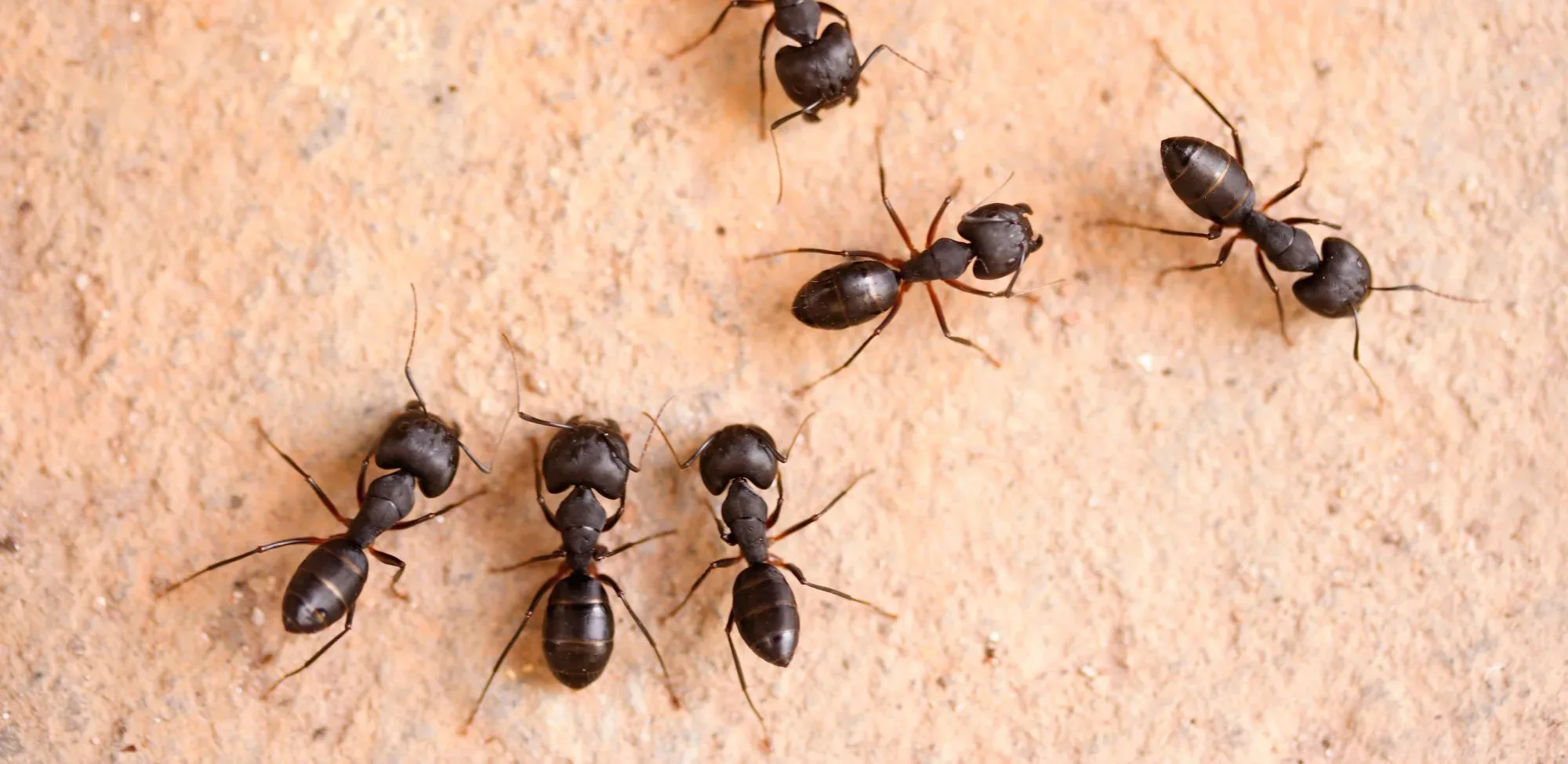
Written by s • Getting Rid Of Carpenter Ants
There are few things as satisfying as a well-tended and cared for garden. Maintaining your outdoor spaces can be a joy, not just for you but also for the wildlife it brings to your property. Unfortunately while most of that wildlife will enhance your enjoyment, some can mar it. So while we celebrate the many birds, mammals and insects there are some other species to be watched for that, if found, need to be dealt with.
There are many species of ants but few are as destructive as the carpenter ant. If a colony is allowed to establish itself and go unchecked they can wreak havoc on buildings, trees and wooden structures, spreading and hollowing out galleries as they go. Being the largest species of ants found in the USA – between a fifth and half an inch long – they are fairly easy to identify once you know what to look for. Generally they are black but they might also be yellow, brown, red or even a combination of those. Like any colony the nest will contain ants of many different sizes, with the worker ants being armed with sizeable pincers. Do they bite? Yes, once disturbed they will let you know about it if they can. Due to their size they are able to bite through your skin with their mandibles – then they spray the wound with irritating formic acid.
The ideal site for carpenter ants is somewhere moist and rotten, like fallen logs or old tree stumps. However they can also be found in live trees and anywhere else with enough wood. A well-established colony may go on to produce satellite nests in the surrounding area, so if you find one nest do not assume that it’s the only one around. All of these facts mean that carpenter ants are a genuine pest and do require removal.
Fortunately, their habit of maintaining a spotlessly clean nest with smooth walls and mess-free floors means they leave tell-tale signs of their presence. Although they are often mistaken for termites, unlike termites they don’t eat the wood they make their homes in. Instead they throw the scraps out, so you’ll often find tiny piles of wood dust and fragments near the entrances. To make a full identification you’ll need a glance under a magnifying glass at a captured ant; things to look for are pinched waists, heart-shaped heads and a ring of hair at the rear. If you are still unsure call in a specialist to have a look for you.
There are some steps you can take yourself to rid your property of these burrowing beasts if you don’t want to pay a professional to do it for you. The market provides many solutions including;
- Baits – Once you’ve identified the routes the ants take around your property, leave baits where the workers will find them. Highly poisonous but very appealing, the ants will carry the bait back to the nest as food for their queen. Try to look for a bait that contains both sugar and protein, as at different points in the day the worker ant could be looking for food high in either of those nutrients.
- Perimeter Sprays – These are effective against a number of insects, but for ants it creates a barrier that they are not likely to cross. These should be sprayed around the property entrances or any gaps where ants might enter buildings. They can also be used to contain ants within a restricted area, which can then be poisoned with bait, or to interrupt ant trails.
- Powders and foams – These are ideal for use in wall cavities of your outbuildings and home if the ants get in there. By making small holes around the vicinity of the nest you can direct the poison into the enclosed spaces. It is advisable to never use liquid poisons in these sites, as they can spread unpredictably.
For even more cost-effective solutions you can make your own poison. A common option is to mix one part borax (Boric acid) with one part sugar or honey and four parts water. This mixture is used in the same way as the bait above, and will be taken back to the nest by the foraging ants. Be sure not to put too much borax in as it will kill the carrying ant before it makes it back to the nest. You want it to make it home with its toxic cargo.
Once the nest has been dealt with it’s vital to prevent re-infestation. Remove all rotting, damp and old wood from the premises and dispose of it. Check around your home and other structures for wooden areas that let in dampness or retain moisture; seal them thoroughly. Carpenter ants rarely set up home in sound, properly sealed wood, but allow rot to set in and the ants will soon follow.





